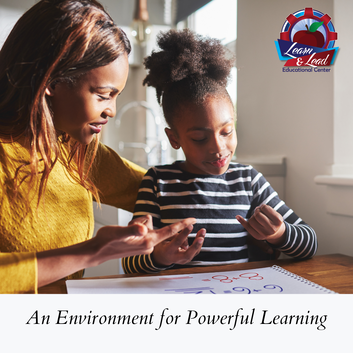 Happy New Year! Many of our children had a few weeks off school for their Christmas holidays. If your house is anything like mine, it may need a bit of a reset after the Christmas holidays! Firstly, it’s important to always remember that as a parent, you are the first and only consistent teacher that your children will have. It is so important that we remember this and that we are intentional about the learning environments that we create in our homes. So even though our children have returned to school, and likely jumped back into their nightly homework and projects, remember the power of the learning that happens in their daily home environments, and that all learning is not necessarily driven by curriculum. When our homes are environments that welcome learning as safe, fun, and exciting, there are increased opportunities for learning. Our children become questioners. They become critical thinkers. They become explorers. They become comfortable taking risks and pushing the limits. When parents are intentional about having an environment that promotes inquisitiveness, diversity of experiences, and they themselves understand that the work of childhood is to grow not only academically, but also emotionally, socially and physically… children thrive. So, as you prepare where your children will sit to do their homework, put some thought into the home learning that you want them to do: the learning that goes beyond their homework and their projects, and the learning environment that you direct. A child’s learning environment is not about the stuff that mom and dad can buy, but it is about the energy in the home and the vision that parents have for the overall development of their children. Here are my top 5 ways to set up a dynamic learning environment: 1. Have a vision. Ask yourself what is important to your child’s learning process. How do you want to see them develop emotionally, socially, academically, and physically? Keep this in mind as you are developing your current space. 2. Be intentional. When you are organizing the space for your children, be sure to know your ‘why?’ If you are buying any materials, make sure you answer the ‘why?’ What is the purpose? If you are changing around furniture…what is the purpose? When you have a clear vision for your learning space it is a lot easy to make intentional choice. 3. Understand the value of play. Play is often highlighted as the work of childhood. Play is essential for a child’s overall development; play is a strong root of learning, and it helps to develop a child’s creativity, problem solving skills and inquisitive nature. 4. Add to the positive environment with your joyful presence. Often as parents we can fall into the role of task master, especially with evening homework. Find times where you can play with your child in their environment and allow them to direct it. Be there to support their learning, whether it’s through dress up, a board game, or crafting. 5. Notice their curiosity. Whether your child has taken an interest in coding or crafting, notice their interests and build on them in positive ways. At school the learning path is usually dictated by curriculum objectives. At home, you have the power to encourage your children to follow and build on what excites them. The best learning occurs when your child is excited about what he or she is learning. Categories
0 Comments
Leave a Reply. |
Author
Yolande Robinson, M.Ed. PodcastShifting Perspectives is a conversation with Yolande and Latasha that challenges Listeners to fuel themselves with diversity in the way they think, the way they work, the way they parent and the way they live their lives.
Listen to Shifting Perspectives on Apple Podcasts, Audible, Amazon Music, Spotify, Google Podcast, Stitcher, Pocket Casts, Overcast, Castro, Castbooks, or Podfriend. Archives
July 2024
Categories
All
|



 RSS Feed
RSS Feed